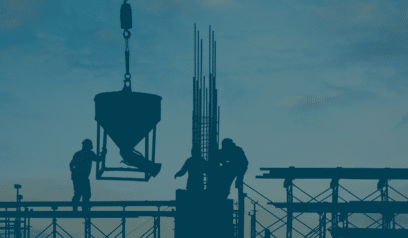TABLE OF CONTENTS
Considering development finance? Use this simple calculator to understand how much you could borrow and how much it will cost.
Page written by Ian Hawkins. Last reviewed on May 14, 2025. Next review due April 6, 2026.


Property security
Initial loan (day 1)
Construction loan
Interest
This calculator is intended for illustration purposes only and exact payment terms should be agreed with a lender before taking out a loan.
Facility overview
Loan term
-
Total facility amount
-
Annual interest rate
-
Initial loan (day 1) interest allowance
-
Construction costs loan interest allowance
-
Available balance
-
Breakdown of loan facility
Gross initial loan (day 1)
-
Gross LTV
-
Arrangement fee (2%)
-
Net initial loan (day 1)
-
Construction
Loan facility (100% costs)
-
Project overview
Current property value
-
Total development costs
-
Gross development value
-
LTGDV
-
LTC
-
Exit fee (2%)
-
Developer's equity contribution
-
Profit
-
Profit on cost
-
GDV per unit
-
GDV per square foot
-
Construction cost per square foot
-
Unlike regular home or business mortgages, development loans are paid out in stages from an agreed loan pool. Lenders will typically limit the funds they are willing to provide to no more than 65% of land purchase costs, and up to 100% of the construction costs.
Here’s an example of new-build development finance:
A plot of land has been sourced that has planning permission to build ten, three bedroom detached houses. The land can be purchased for £600,000 and the cost to build all ten houses will be £2,000,000. Total deal costs are £2,600,000, excluding fees and interest.
The estimated value of each house after construction (including their freehold), is £350,000 meaning a Gross Development Value (GDV) of (10 x £350,000) £3,500,000.
Development finance can be used to raise up to 65% of the land cost = £390,000 and 100% of the build cost = £2,000,000. This is also subject to the total borrowing requirement not exceeding 70% of the Gross Development Value (LTGDV), which in this scenario is 68% (£2,390,000 vs £3,500,000).
A loan facility is set up for £2,390,000. (The pool). Funds are released in stages, with an initial release of £390,000 to help buy the land. The developer will provide cash in the sum of £180,000 to complete the land purchase.
The remaining £2,000,000 will be released in stages as the new-build progresses. The borrower will use their cash first, with the lender then following with further drawdowns.
The borrowed sum of £2,390,000 plus interest is repaid when the houses are sold on completion. As this deal is not a joint venture, the developer retains all the profits.
With most development loans, interest is only charged on funds that have been drawn from the loan pool.
The interest rate charged on development loans is directly linked to the lenders perceived risk of the deal. Therefore, the more you borrow against the total project cost, the higher the interest rate is likely to be. Therefore, any developer needs to trade off the cash they have available to contribute towards the scheme vs the interest rate they are willing to pay to borrow the funds.
All calculators
Join the 110,000+ businesses just like yours getting the Swoop newsletter.
Free. No spam. Opt out whenever you like.



























We work with world class partners to help us support businesses with finance
Kingfisher Way, Silverlink Business Park, Newcastle upon Tyne, NE28 9NX, UK
View in Google MapsAberystwyth Innovation and Enterprise Campus
Gogerddan Campus
Aberystwyth University
Ceredigion
SY23 3EE
Dogpatch Labs, The CHQ Building, Custom House Quay, Dublin, Ireland
View in Google MapsSuite 801, Level 8, 84 Pitt Street, Sydney, NSW 2000, Australia
View in Google Maps43 W 23rd St, New York, NY 10010, United States
View in Google Maps21 Dreyer Street, Cape Town, South Africa, 7708
View in Google Maps
Disclaimer: Swoop Finance helps UK firms access business finance, working directly with businesses and their trusted advisors. We are a credit broker and do not provide loans or other finance products ourselves. We can introduce you to a panel of lenders, equity funds and grant agencies. Whichever lender you choose we may receive commission from them (either a fixed fee of fixed % of the amount you receive) and different lenders pay different rates. For certain lenders, we do have influence over the interest rate, and this can impact the amount you pay under the agreement. All finance and quotes are subject to status and income. Applicants must be aged 18 and over and terms and conditions apply. Guarantees and Indemnities may be required. Swoop Finance can introduce applicants to a number of providers based on the applicants’ circumstances and creditworthiness. Swoop Finance Limited is registered with the Financial Conduct Authority as an Account Information Services Provider (reference number 833145). Swoop Finance Limited is authorised as a credit broker under FCA registration number 936513. If you feel you have a complaint, please read our complaints section highlighted above and also contained within our terms and conditions. Swoop Finance Ltd is registered with Companies House (company number 11163382, registered address The Stable Yard, Vicarage Road, Stony Stratford, Milton Keynes MK11 1BN). VAT number: 300080279
Clever finance tips and the latest news
Delivered to your inbox monthly
Join the 110,000+ businesses just like yours getting the Swoop newsletter. Free. No spam. Opt out whenever you like.
Thanks for requesting a call back
a member of the team will be in touch.




